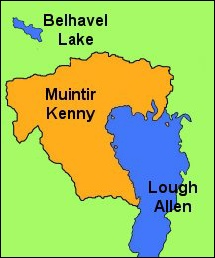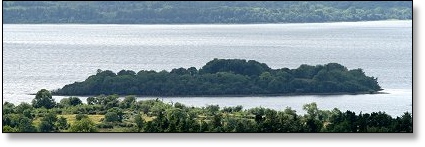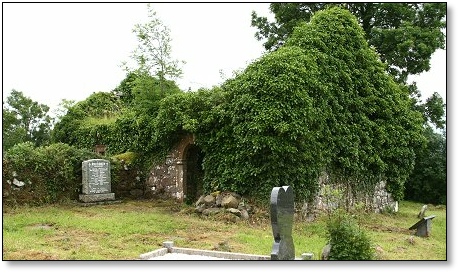
 Home
Churches
News
Newsletter
Personnel
Notices
Contact Us
History
More...
Home
Churches
News
Newsletter
Personnel
Notices
Contact Us
History
More...

 Early History
Local Families
The Friars
The French 1798
Lough Allen Tragedy
The 1800's
Priests
Fr Myles McPartlan
Fr Tom Maguire
Other Priests
Religious Sisters
Old Churches
Drumkeeran in 1901
Early History
Local Families
The Friars
The French 1798
Lough Allen Tragedy
The 1800's
Priests
Fr Myles McPartlan
Fr Tom Maguire
Other Priests
Religious Sisters
Old Churches
Drumkeeran in 1901
The Breifne Historical
Society
Cumann Seanchais Bhreifne,
the Breifne Historical Society, deals with the local history
of Counties Cavan and North Leitrim.
Visit the web site of
Cumann Seanchais Bhreifne
EARLY HISTORY
We know very little of the early history of Inishmagrath or of the origin or derivation
of the name of Inishmagrath.
 The ancient name of the area we now call the Parish of Inishmagrath was Muintir Chionaith,
or Muintir Kenny. We know nothing more of this person called Cionaith, or of his
family or clan. However, this part of Leitrim has been called after him and was known
as Muintir Chionaith from early times.
The ancient name of the area we now call the Parish of Inishmagrath was Muintir Chionaith,
or Muintir Kenny. We know nothing more of this person called Cionaith, or of his
family or clan. However, this part of Leitrim has been called after him and was known
as Muintir Chionaith from early times.
Historians are in general agreement that Muintir Chionaith and the parish of Inishmagrath refer to the same area of land on the northern and western side of Lough Allen.
It seems that the parish derives its name from the Lough Allen island of the same
name. The island consists of about seven acres and is situated a short distance from
the shore, quite close to where the Shannon enters the lake. On it can be found the
ruins of an old church and a disused graveyard. According to tradition this church
was built by St Beo-
 The Island of Inishmagrath
The Island of Inishmagrath
Over the centuries the island of Inishmagrath was used as a place of burial until a church was built at Kilbride in the 1730’s. This view of the island is from the Ballinaglera side.
 Kilbride Church and Cemetery
Kilbride Church and Cemetery
The new church at Kilbride had an adjoining cemetery and gradually replaced the island as the local place of burial.
Why was the island called “Inishmagrath”?
One possible explanation may lie in the fact that in medieval Ireland laymen were often appointed as hereditary wardens of churches and church lands with a duty to protect and maintain the church and its associated lands. Such people were called Termoners. One of the most prominent Termoner families in Ireland was that of McGrath. Could it be possible that the McGrath family were Termoners of the church and the island and that, as a result, the island became known as Inis McGrath (the island of McGrath) or Inishmagrath?
